If you have been exposed to modern psychiatry, you have been exposed to the Diagnostic and Statistical Manual of Mental Disorders (DSM) whether or not you are aware of it. This book, often referred to as the "psychiatrist's bible," is the go-to manual for diagnostic criteria of a wide range of mental disorders. Its current incarnation, the DSM-IV-TR (text revision), includes nearly 400 disorders.
Throughout the coming month, we will be delving into some of these disorders in more detail. Before we do that, I think it is important to take a critical look at the DSM, including historical perspectives and future implications.
History of the DSM
The DSM-I was published in 1952 and included 106 mental disorders. It was founded on early principles of psychiatry, namely psychodynamic theory (made popular by Sigmund Freud and Carl Jung). Although an understanding of these historical approaches to psychology are necessary, I find the proportion of textbook pages and lecture time that many modern psychology classes dedicate to this antiquated theory baffling. Early psychodynamics was decidedly unscientific, but many therapists today still cling to its underlying principles. I suppose that old habits die hard, but failure to embrace current trends in mental health science contribute to the stigma that clinical diagnostics, psychotherapy, and psychopharmacology continue to hold in the public eye.
"Scientization" of Psychiatry
Robert Spitzer is arguably the most influential psychiatrist whose name you have never heard. He led the efforts to considerably overhaul the DSM, and in 1980, the DSM-III was published, codified with a strong scientific and medical model. This new version included efforts to statistically quantify incidence rates, demographics, and "calculable" symptomatology. And while the validity of the DSM is still questioned by skeptics, its reliability has come back under fire as well. In the peer-reviewed journal Psychiatry, Ahmed Aboraya writes that "The DSM did improve the reliability of psychiatric diagnoses at the research level. If a researcher or a clinician can afford to spend 2 to 3 hours per patient using the DSM criteria and a structured interview or a rating scale, the reliability would improve. For psychiatrists and clinicians, who live in a world without hours to spare, the reliability of psychiatric diagnoses is still poor." Even Spitzer himself admitted to Alix Spiegel, in a 2005 New Yorker article: "To say that we’ve solved the reliability problem is just not true. It’s been improved. But if you’re in a situation with a general clinician it’s certainly not very good. There’s still a real problem, and it’s not clear how to solve the problem."
Future Diagnostic Efforts
The DSM-V is currently in development. It is slated for release in May 2013. The American Psychiatric Association, the authoring body of the DSM, has partnered with the National Institutes of Mental Health in an effort to present the mental health community at large with the most comprehensive and scientifically accurate diagnostic tool to date. Not surprisingly, this effort has been met with considerable controversy. You can read all about the proposed revisions, including research papers and letters from the task force here.
Bear in mind that this endeavor is significantly limited in terms of transparency. In fact, in early stages of its preparation, the DSM-V task force was required to sign a non-disclosure agreement. This did nothing to calm the fears of those who are skeptical of the relationships and profit-motives possessed by researchers, diagnosticians, therapists, and drug prescribers alike. Spitzer remarked that "When I first heard about this agreement, I just went bonkers. Transparency is necessary if the document is to have credibility, and, in time, you’re going to have people complaining all over the place that they didn’t have the opportunity to challenge anything."
Although the non-disclosure has since been lifted, concerns about full transparency remain. In addition, many individuals are worried about "false positives" in diagnostic approaches. Such a rigorous scientific model has a tendency to minimize clinical judgment and contextual nuance, what might be called the "human" side of psychiatry. Allen Frances, the architect of the DSM-IV, told PBS that "my concern has been that the ambitions expressed by those working on "DSM-V" would lead to unintended consequences, with many patients being created through new categories or the lowering of thresholds of existing categories, people who probably don't need the treatment that they might receive, but would probably receive if they get a diagnosis."
In an article by John Sorboro, many more concerns are raised. As a practicing psychiatrist and card-carrying skeptic, his sharp words carry a special weight: "Unless the APA takes a dramatic turn and decides to narrow the scope of what it considers pathology and worthy of research and medical treatment, it will be a step backwards for a field already circling the drain due to its poorly conceived cataloging and incoherent theoretical models."
This post has been updated from its original version. It has been edited for brevity. In addition, Allen Frances was misspelled Allen Francis in an earlier version.
See all Talk Nerdy to Me posts: www.huffingtonpost.com/news/talk-nerdy-to-me
Like Cara Santa Maria on Facebook: www.facebook.com/pages/Cara-Santa-Maria
Follow Cara Santa Maria on Twitter: www.twitter.com/CaraSantaMaria